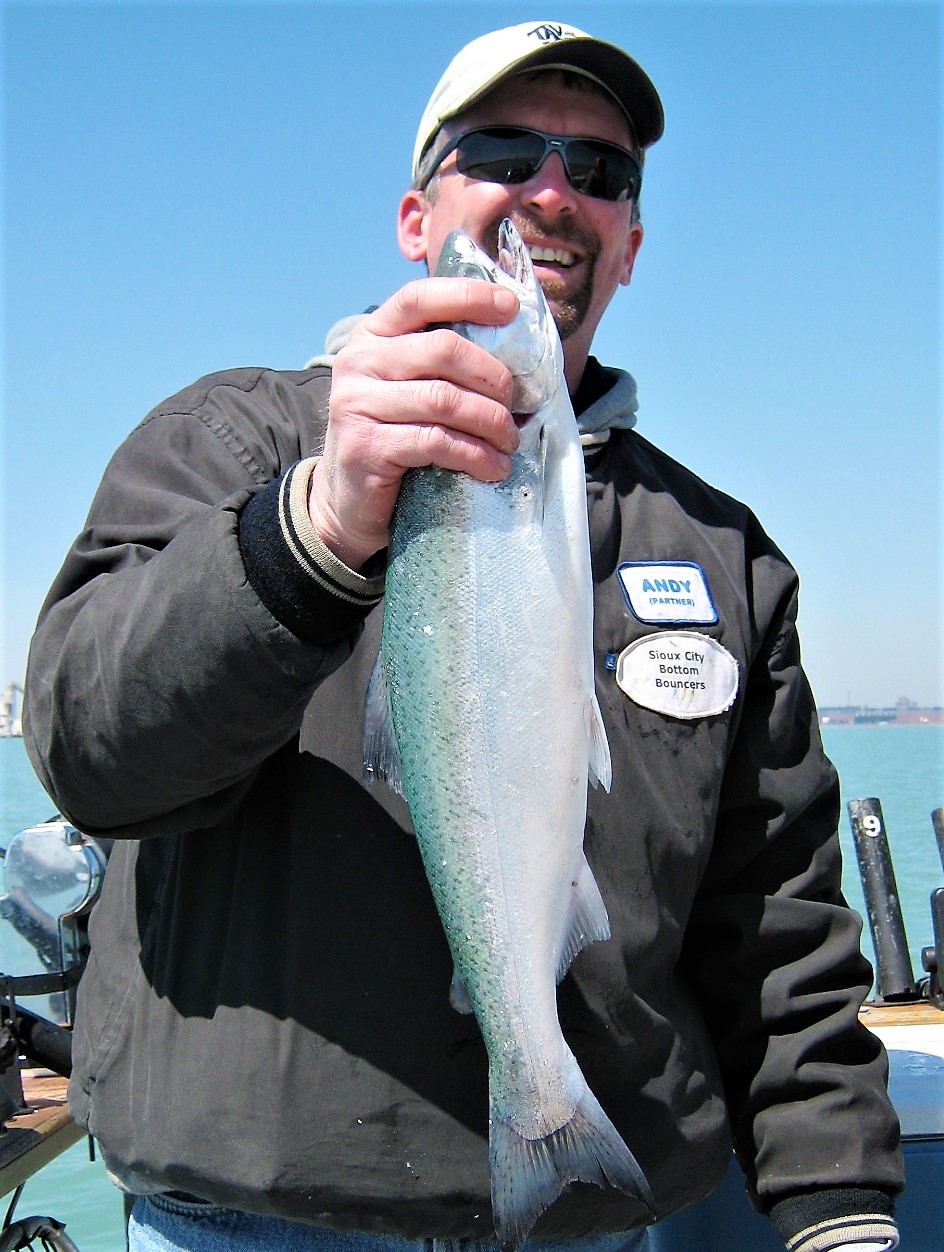- Kings, Cohos, Atlantic Salmon, Steelhead, Lake Trout…and their forage base
- Atlantic Salmon and Steelhead have more extended lives and thrive on different forage
- The Michigan DNR has an essential decision to make, in 2020: is the King dead?

By Mike Schoonveld
After the results of the coho salmon stocking experiment in Lake Michigan a few years back, the test was a success. Control of the overabundant alewife population had been established in Lake Michigan, so cohos were stocked in Lake Huron next. There, the experiment was also a success, but two things worked to keep the Lake Huron success in the background.
First, they were second. Who placed second at the Daytona 500 last year? Who earned a silver medal in Olympic ski jumping? Few people remember runners-up.
More importantly, after the resounding success of coho stocking in the Great Lakes, next came the stocking of chinook salmon. There’s a cute maxim about Great Lakes salmon: “A coho is a silver, a chinook is the king!” Coho and chinook are the names given these species by the indigenous people, explorers, and settlers to the Pacific Northwest who called them silvers and kings.
The emphasis in this aphorism is on kings, since king salmon are usually two or three times larger than cohos and two or three times harder to bring to net, even at equivalent sizes. Once kings entered the picture, few anglers put much effort into trying to catch cohos.
In Lake Michigan, cohos gained a loyal following – especially in the southern end of the lake – near Benton Harbor and New Buffalo in Michigan, and again in Platte Bay in October, when Michigan’s cohos show up for their spawning run. Lake Huron coho fans were much smaller in number, and far fewer cohos were fished for and caught. Add to this the expense of stocking cohos is roughly triple the cost per fish of stocking king salmon. It was an easy decision, 30 years ago, for the Michigan DNR to discontinue the coho program in Lake Huron.

Things changed in 30 years, most notable was the collapse of the alewife/chinook salmon dominated ecosystem in Lake Huron. Sure there were lake trout, steelhead, walleye, bass, perch, even pike, muskies and smallmouth in certain areas, but the primary forage fish was alewife, and the central predator feeding on the alewives was king salmon.
The demise of the alewife/chinook ecosystem in Lake Huron is well documented. There were many moving parts in the collapse, but basically, king salmon numbers went up due to natural reproduction, and the resulting kings ate all the alewives.
Chinook catches crashed to near zero despite continued MDNR stocking in select locations. Biologists learned that most of the stocked fish that would hopefully provide a minimal background chinook fishery for Huron anglers had migrated to Lake Michigan, where alewives were available by the time they were big enough to catch.
The chinook/alewife connection proved to be unbreakable. When alewives were eliminated, native forage species (which had been suppressed by the abundant ales) flourished. Sticklebacks, sculpin, herring, and others increased, as did non-native smelt and invasive round gobies. Kings turned their nose up at eating these alternatives.
Not so with Lake Huron’s other predator fish. Walleyes, lakers, and others quickly responded by foraging on these alternate, often more nutritious prey fish.
Fishermen, by and large, weren’t as interested in fishing for lake trout, walleyes, and other species. It was king salmon that attracted the crowds and provided customers for charter captains, restaurants, hotels, and other businesses. Fishing license sales attributed to Lake Huron anglers dropped dramatically.
Can anything be done? That’s the new question the MDNR hopes to answer.
One potential answer is to stock more steelhead.
Steelhead are more opportunistic feeders, seemingly as content to slurp beetles and moths off the lake surface as they are chasing shiners or other small prey fish.
Another potential answer is to stock Atlantic salmon. The Atlantic salmon program run by Lake Superior State at Sault Saint Marie in the St. Marys River, which flows into Lake Huron, seems to be vibrant. Perhaps the Atlantics could fill the void left by the shortage of Huron kings.
Perhaps an idea based on the concept “everything old is new again” could entice anglers back to Lake Huron. The MDNR recently stocked almost 50,000 coho salmon at Port Sanilac and another 50,000 at Alpena.
Food studies have shown cohos aren’t nearly as picky eaters as king salmon. They spend their first year of life, or longer, in the hatchery. When stocked at only seven or eight inches in length, they feed more on bugs than prey fish for much of their second year of life, and even in their third and final year (they spawn and die at age three), they will eat insects as well as smelt, gobies or most any other fish they can find.
The angling results of this experiment will be known this year. By spring, these cohos should be two or three times as large (16 to 22 inches), and many will be four to six pounds by mid-summer.
When it comes to Lake Huron salmon, a take-off on another familiar dictum may be appropriate, “The king is dead…long live the coho!”
THE END


